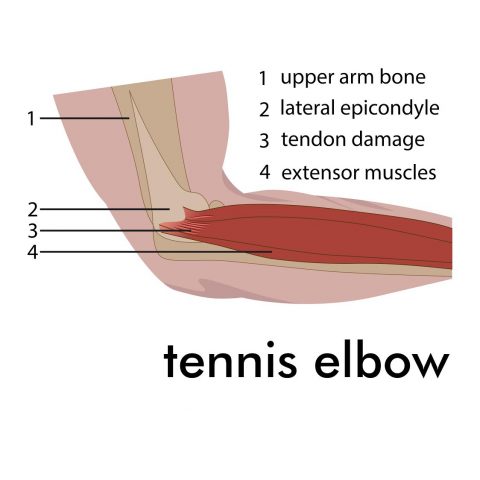- Home Common Injuries
- Tennis Elbow Treatment
Tennis Elbow Treatment

What is tennis elbow?
 Tennis elbow is a condition we see regularly at Newcastle Physiotherapy. Tennis elbow is a tendinopathy of the extensor tendons which attach into the elbow. Medically it is also known as lateral epicondylitis as the tendons attach onto the lateral epicondyle of the humerus.
Tennis elbow is a condition we see regularly at Newcastle Physiotherapy. Tennis elbow is a tendinopathy of the extensor tendons which attach into the elbow. Medically it is also known as lateral epicondylitis as the tendons attach onto the lateral epicondyle of the humerus.
What are the symptoms of tennis elbow?
The pain will be located on the outer part of the elbow where you can feel the tendon attaching to the bone.
Pain will be felt when gripping. The most aggravating activities include lifting a heavy pan or kettle, using a screwdriver, carrying shopping bags and as the name suggests playing racquet sports.
Where are the wrist extensors located?
 How is it caused?
How is it caused?
Tennis elbow is often caused by a repetitive strain of the extensor tendons of the wrist. Activities involving excessive gripping (such as tennis and hence the name) can cause tendon inflammation if the tendon becomes overloaded without sufficient opportunity to rest.
Frustratingly tennis elbow can also present in people who have absolutely no history of repetitive strain and researchers are still unsure why that maybe. The most common age group affected by tennis elbow is 45-54 years.
How do we treat tennis elbow?
Physiotherapy has been shown to be the most effective treatment for tennis elbow when compared to a steroid injection and doing nothing.
The objective of treatment is always to reduce pain and swelling, restore normal range of movement and strength and ultimately function so you can use your arm normally without pain. Therefore we often use a combination of the following treatment modalities:
- Manual therapy to improve soft tissue flexibility and mobility, mobilise the joints of the elbow and wrist to reduce joint stiffness.
- Taping to support and off-load the inflamed tendons.
- Rehabilitative exercise to regain muscle length and strength.
- Acupuncture to reduce pain and sensitivity of the tendon.
- Advice on pain management, minimising aggravating activities and guidance on how to progressively increase load appropriately as your symptoms start to improve.
If you think you may have tennis elbow and would like one of our Chartered physiotherapist’s to help you please call us or use the button below.
